
San Gabriel Valley’s Structural Bee Removal Experts
Safe, professional bee removal and full repair — no contractors needed.
Call or Text Now for Same-Day Service and a Free Quote!
At APA Bee Removal, we specialize in structural beehive removal and repairs, so you don’t have to hire extra contractors or pay more to fix the openings made during hive removal.
From walls, attics, and roofs to sheds and chimneys, our experienced team handles everything:
- Safe, humane bee removal
- Full repair & restoration (stucco, drywall, roofing, siding, etc.)
- Live bee swarm removal & relocation
- Bee-proofing to prevent future infestations
We’re available 24/7 for emergencies, respond fast, and will beat any reasonable quote. Every job is backed by our 2-year written guarantee, because we don’t just remove bees — we solve the problem for good.
WHAT WE DO
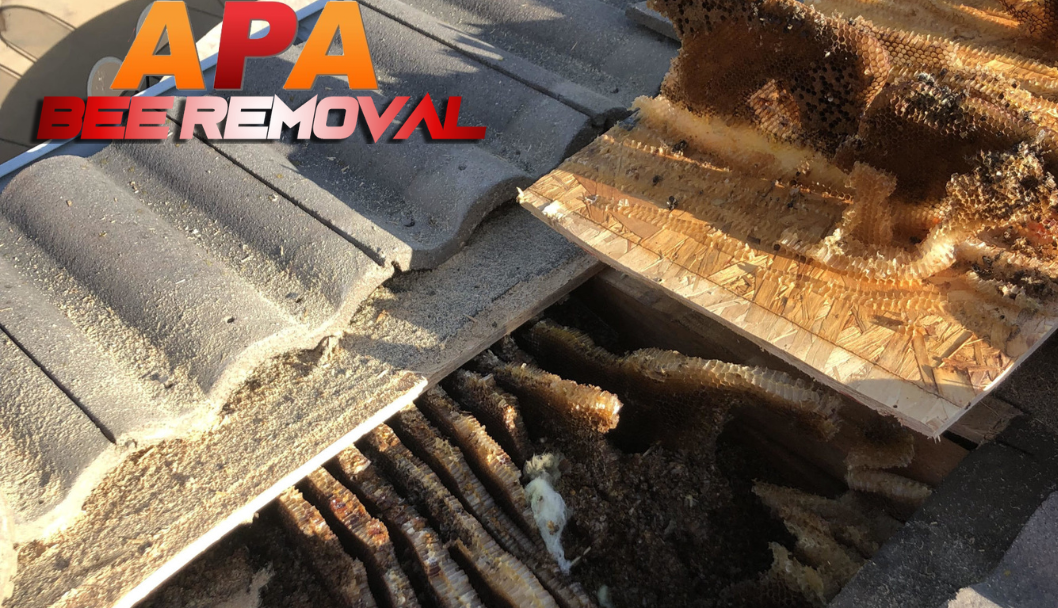 We employ methods to extract hives with minimal structural damage, prioritizing the safety of the nesting bees. Our live honeybee removal process involves careful manual handling or, at times, using a vacuum. The bees are relocated to our local hives to continue their honey production. However, not all hives survive the transplantation process, particularly those previously exposed to sprays. We back every job with our guarantee. We meticulously identify the bees’ entry points and handle your property with the utmost care, aiming to minimize any damage to the roofline, walls, or siding. Our success rate in Los Angeles and Orange County speaks for itself, and we offer the most competitive rates in the area. Contact us for the best possible service and rates.
We employ methods to extract hives with minimal structural damage, prioritizing the safety of the nesting bees. Our live honeybee removal process involves careful manual handling or, at times, using a vacuum. The bees are relocated to our local hives to continue their honey production. However, not all hives survive the transplantation process, particularly those previously exposed to sprays. We back every job with our guarantee. We meticulously identify the bees’ entry points and handle your property with the utmost care, aiming to minimize any damage to the roofline, walls, or siding. Our success rate in Los Angeles and Orange County speaks for itself, and we offer the most competitive rates in the area. Contact us for the best possible service and rates.
What We Offer
- Expert Bee & Honeycomb Removal
- Same Day Service 24/7 Emergency Service
- Free Onsite Inspections By Bee Management Professional
- Honest & Best Prices- Beat Any Quote
- Written guarantees -Licensed and insured
Expert Bee Removal & Repair Services From
- Valve Boxes -Branches- Bushes -Trees-Sheds
- Roofs- Walls- Chimneys- Floors- Siding
- Stucco- Drywall -Attics
- Hard to Reach Building Structures- Crane Work
- Safe All Live Bee Removal and Relocation
- Over 20 Years Experience Structural Removal & Repair
- Best Prices In The Industry
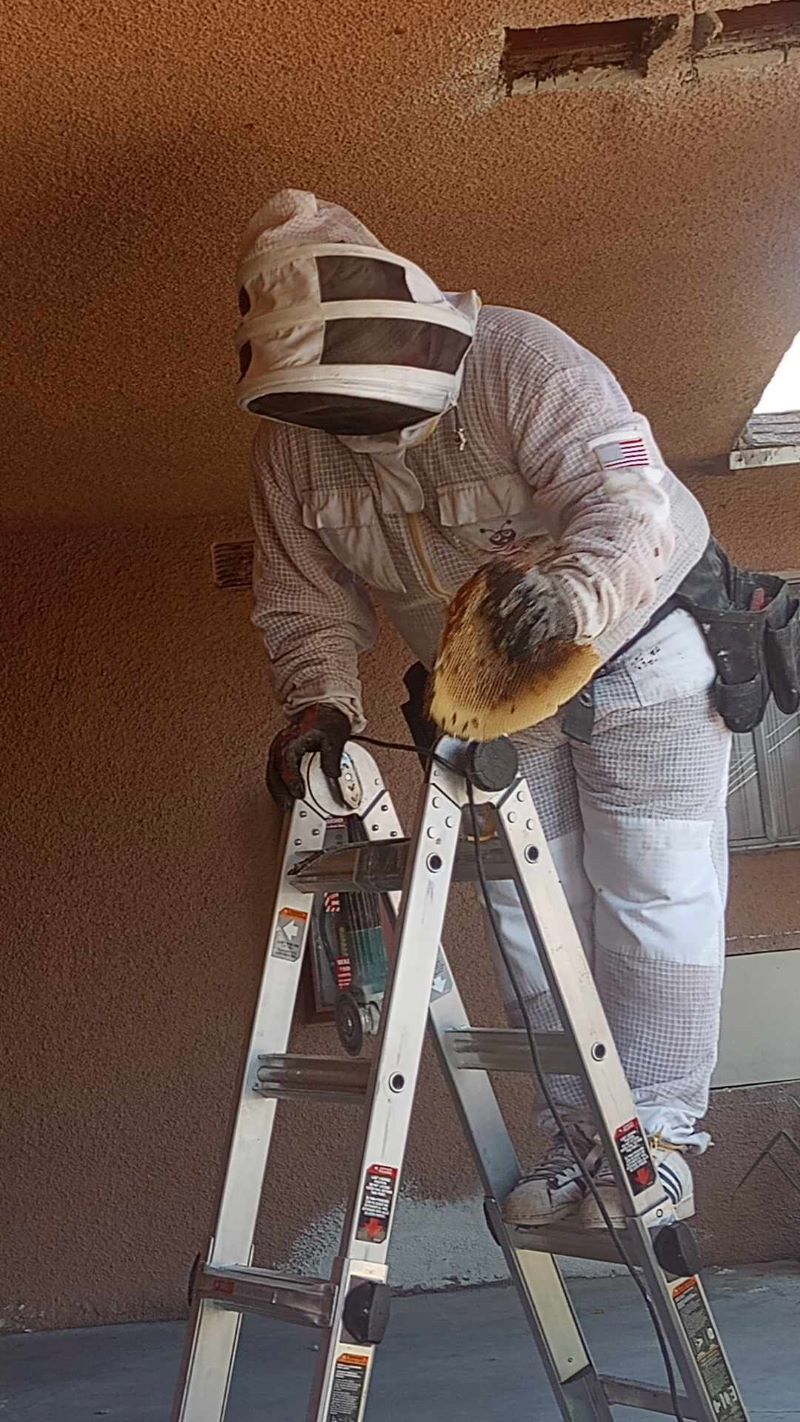
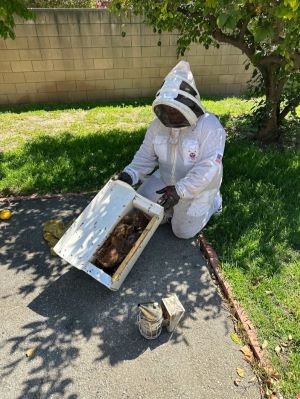
Whether it’s your first encounter with a bee issue or a recurring problem, APA Bee Removal is here to assist you. With over twenty years of experience, our beekeepers have been handling bee removals for residents, businesses, and property managers. California’s conducive temperatures have contributed to a rise in wild bee populations around homes and businesses, prompting the need for professional assistance.
At APA Bee Removal , we conduct numerous bee removals and swarm relocations annually across Los Angeles, and Orange County. Following the removal process, we carefully box the bees for crop pollination purposes. Our expertise extends to removing bees from various locations such as trees, landscaping, roofs, walls, attics, fireplaces, sheds, cars, boats, personal residences, commercial buildings, and more.
Warning: Upon discovering the issue, it’s crucial not to attempt handling it yourself. Honey Bees, Wasps, and Yellowjackets fiercely defend their hives. For your safety, steer clear of the hive and contact a professional equipped with the necessary tools and expertise to remove it safely. Africanized bees, in particular, attack in large numbers, emphasizing the importance of seeking professional assistance immediately.
What Our Customers Say
Trustindex verifies that the original source of the review is Google. The removal expert did a great job today. Answered all of my questions during the removal process. He has 25 years of experience and it showed. I even got some of the honey.Posted onTrustindex verifies that the original source of the review is Google. I found 4 wasp nests at my backdoor and window. I googled beekeeper and found APA BEE REMOVAL. A beekeeper came over 1.5 hous after I gave them a call on weekend. He is quick and efficient. The nests were removed completely and I was told that I have a warranty period of 30 days. I was charged $200 for the service. I appreciate the proficiency and quick responsiveness from APA BEE REMOVAL. I recommend them if you happen to encounter the similar problem for your house.Posted onTrustindex verifies that the original source of the review is Google. Came to my parents home for 4th of July. Notice where bees going in the roof area of the garage. Alex so awsome, friendly and very knowledgeable. came removed the bees and also did the repair. Iam so happy because i hought we would have a hardtime to find someone on a holiday and to respond so quickly. the process was so easy.Posted onTrustindex verifies that the original source of the review is Google. On May 26, 2025, we saw a bee swarm in our orange tree.. called this company and they were out to our house within hours to remove it.. he was so nice and professional.. as of this morning no more bee.. hats off look at the size of the bee swarm Thank you so muchPosted onTrustindex verifies that the original source of the review is Google. He was great. Very professional friendly, and kept us informed of everything he had to do He worked fast and got the job done in about two hours Would definitely use them againPosted onTrustindex verifies that the original source of the review is Google. Called them at one in the morning. They were here within an hour. Quick service friendly will definitely use them again.!Posted onTrustindex verifies that the original source of the review is Google. Had great experience with this company great customer servicePosted onTrustindex verifies that the original source of the review is Google. Gracias a APA BEE. REMOVAL me ayudaron con una colmena que tenía dentro de la pared de mi casa son gente muy buena y profesional los recomiendo muchoPosted onTrustindex verifies that the original source of the review is Google. Alex is amazing, knowledgeable, efficient, and handled bees swiftly. Removed 50 pounds of honey comb and honey.Posted onTrustindex verifies that the original source of the review is Google. Great service at a reasonable price. Alex is super professional and friendly. For our roof top, he had to rent a lift to do the job, The price was reasonable and did a fantastic job putting back the roof. They seem to be really busy, so have a little patient.
The quote we give you over the phone is the price you will pay! No Added Or Hidden fees!
Why Bee Removal Is Important
Are you noticing bees entering through a small crack just under the eaves of your roof? Or how about bees darting in & out of a hole in your wall? These are examples of a full beehive inside the structure of your home. The longer the beehive stays there the larger the beehive gets, and to remove becomes costly due to the size of the beehive and the repair cost. Many homeowners notice they have a beehive and wait until it becomes a problem. Normally the bees are stinging everyone that passes by. Or they stung the gardeners, pool guys, or the neighbors. Unfortunately, bee removal is not a DIY project that homeowners can take care of on their own. This is why it is important to call us at (626) 336-1373 if you suspect you have a beehive so that we can safely remove the beehive for you. Below are the top reasons why bee removal is important.
Immediate Risks & Damage
- Melting honey and wax
- Odors and rot
- Bee aggresion
- Pest attraction
- Repeat infestations

Our Roof Beehive Removal Process
Here’s what you can expect from APA Bee Removal:
1. Inspection
We start by inspecting the roof and attic using thermal imaging and sound detection to locate the hive.
2. Careful Roof Access
tgWe’ll carefully lift shingles, cut into roofing paper, and access the cavity containing the hive. We never damage more than necessary and always document the work with photos.
3. Full Hive & Honeycomb Removal
We remove bees live whenever possible and safely relocate them to local beekeepers. We then remove all honeycomb and clean the area with an enzyme wash to break down leftover scents.
4. Repair & Sealing
We reseal the roof, replace roofing felt or shingles, and seal all bee entry points so they don’t return.
Worried about bees in your roof, attic, wall, or chimney? You’re not alone — many homeowners across Pasadena, El Monte, West Covina, Glendora, and the entire San Gabriel Valley face unexpected infestations every year. At APA Bee Removal, we specialize in removing hidden hives from structures — safely, humanely, and without shortcuts. We’re available 24/7 for same-day service, and we back our work with the only 2-year written guarantee in the industry.
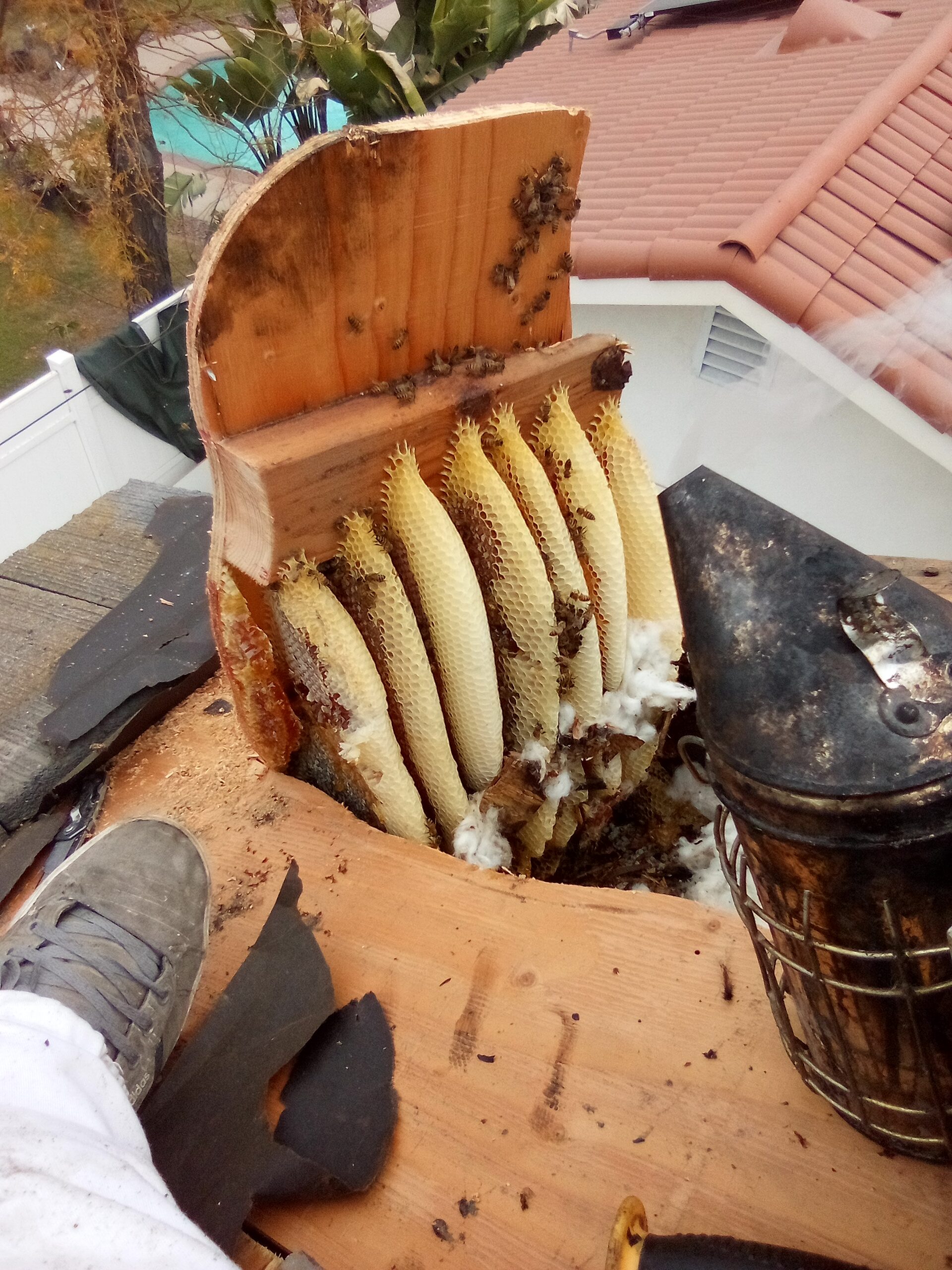
Are Beehives In The Roof a Problem?
Bees often enter through vents, gaps in shingles, or small openings under eaves. Once inside, they can build massive hives between rafters, insulation, or under roofing paper. These hives can:
- Soak your insulation with honey
- Cause drywall staining or sagging ceilings
- Attract ants, rodents, or mold
- Lead to expensive roof and attic repairs
That’s why complete removal and filling in the cavity is key—not just spraying bees and walking away.
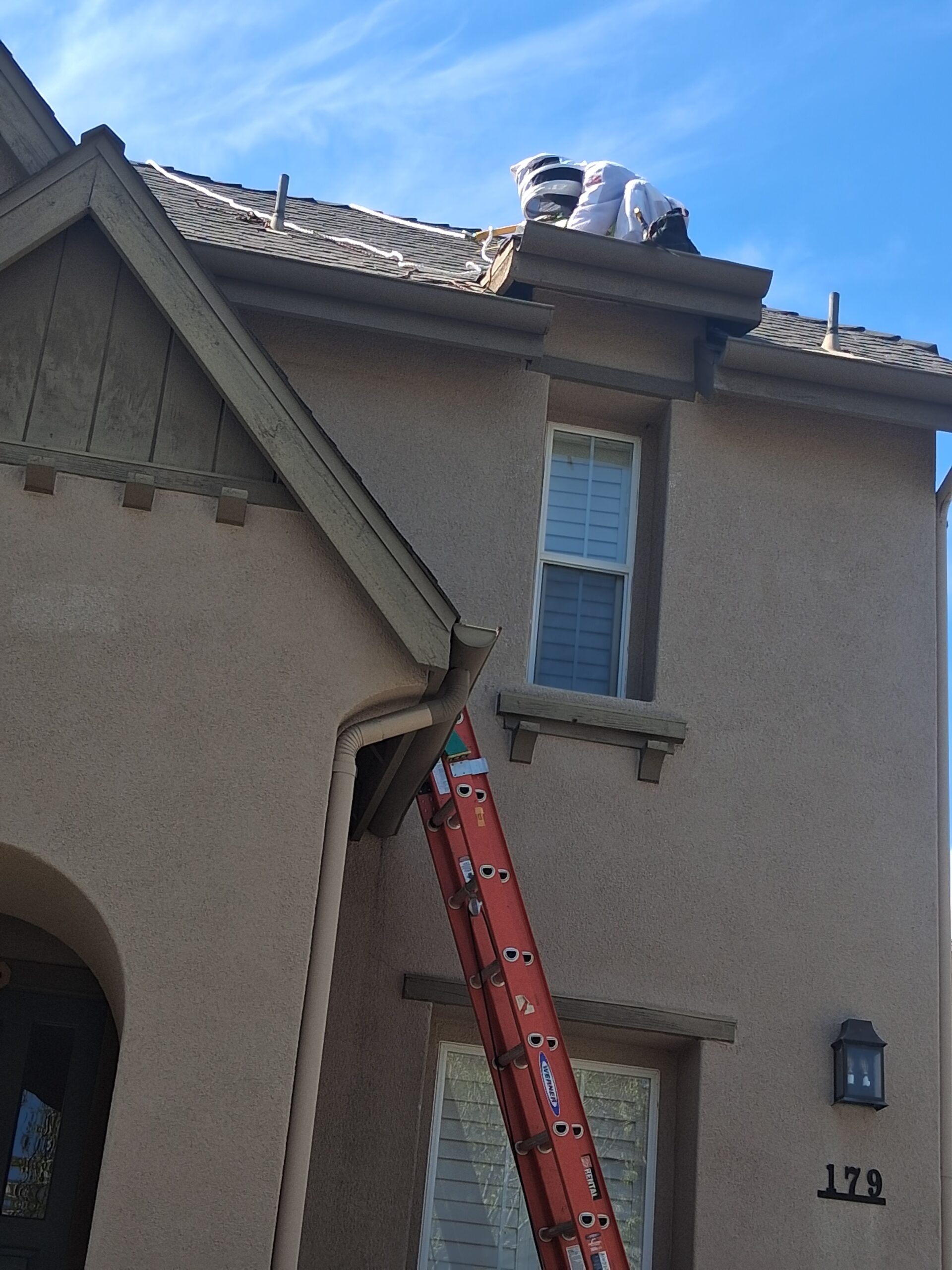

Our 2-Year Guarantee
Peace of Mind, Guaranteed Bee Removal.
At APA Bee Removal, we stand behind our work. That’s why we offer an exclusive 2-year written guarantee, the only one of its kind in the area. If bees return within two years of our service, we’ll come back and take care of the problem at no additional cost to you.
- Comprehensive Protection: Our guarantee covers complete bee removal and prevention.
- No Hidden Costs: If bees return, we handle it, free of charge.
- Unmatched Confidence: We're confident in our methods and expertise.
- Customer Satisfaction: Your peace of mind is our top priority.
Same Day Service Areas
Central San Gabriel Valley Cities
West San Gabriel Valley Cities
East San Gabriel Valley Cities
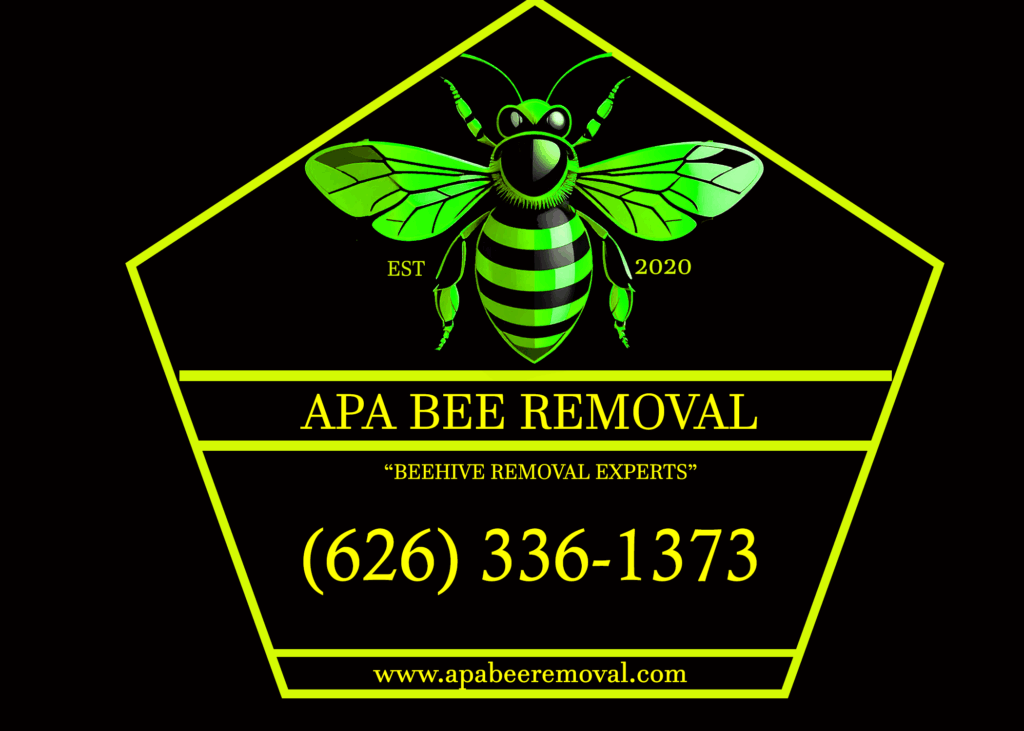

We have a fast response time and offer emergency call outs in weekends and after hours.
The Most Common Questions
If a beehive is left behind, the smell of it will attract bees back to the area for years to come. If a typical size beehive is abandoned and is located in an attic or wall, once the bees have departed, the honey will completely melt out of the comb and will destroy drywall, stucco, siding, paint, etc. The abandoned beehive will then attract other pests such as ants and rodents.
We always try to remove bee swarms live. The following list are attributes of a bee problem that allow us to remove the bees in a humane way.
1. The bees are not aggressive and in swarm or early hive formation.
2. The bees are easily accessible and are clustered out in the open and not inside a structure.
3. We are able to place them with a beekeeper in our Network.
We perform exceptional bee removal repairs. With over 20 years of construction experience, by the time we are done with any structural repairs from your bee removal, you wouldn’t even know you had a beehive.
The cost of bee removal varies depending upon a number of factors. There are three main factors that can effect the cost of a job.
1. The first is the length of time the problem has been going on. If you have a swarm it is less expensive to resolve than if you have a hive. A swarm is a collection of bees that has just landed and is looking to build a hive. A fully established hive can be built in only a couple weeks, so fixing the problem quickly (before the swarm has built a hive) is much less expensive than if a hive has already been established.
2. The second factor that influences the price of a job is where the bees or hive is located. Is it in a tree at eye level that is easy to get to? Or is it 25 feet up in a palm tree? Does it require a ladder? Is it on a hillside or up a steep slope? Do you need to crawl under a structure to get to it? Do you need a boom lift or heavy equipment to reach it? All of these factors dictate the difficulty and price of the job.
3. The third main factor is what materials and tools will be needed to remove the hive? Is the hive in a 3nd story wood shingle roof or a single story Spanish tile roof? Are the bees inside an irrigation box in the ground where the lid can be lifted easily? Or are they inside a concrete wall that needs to be demolished in order to get to the hive? Are the bees in a stucco wall, a wood wall, or a type of wall that has special masonry? All of these examples can effect the cost of the hive removal.
As soon as you spray bees with chemical pesticides it kills the honeybees but the honey and honey comb are left behind for rodents and pests to feed on and contaminate the area with their droppings. Another reason is that more bees can often occupy the beehive and you have another live beehive on your hands. That’s why it’s critical that the entire beehive and honeycomb are removed from your property.
In the case of a Swarm, usually YES. A swarm of bees may stop to rest on just about anything during the migratory process and leave between 1 and 72 hours later. The swarming season occurs mostly during Spring and Fall, but it can occur at other times of the year as well. Established Colonies will NOT leave once they have set up housekeeping except in extenuating circumstances. Bees may choose various hollow cavities to set up colonies such as your roof, eaves, wall voids, water meter boxes, even a BBQ grill or a birdhouse. It only takes bees about 72 hours to start producing honey and combs once they move in.
Bees need water just like we do. They will gather at swimming pools, ponds, and water coolers in order to find it. Water-collecting bees are docile just as when they are foraging for pollen and nectar. Bees will also communicate to their colony where the best sources of water are so when they find a good spot they are likely to return repeatedly. The only way to rid your property of foraging bees is to take away the water or food source they are coming to. They will become discouraged and go elsewhere. This can be fairly easy with fountains and birdbaths, but not so easily done with an entire pool.
Bees are only dangerous when they are defending their colony: nest, honey and brood. They are not dangerous when foraging for pollen, collecting water, nor typically when swarming. This means that it is important to check the area around your home for wild colonies of bees, as they can be easily disturbed and will defend themselves. If you or your pets have been stung by bees and believe you are having an allergic reaction consult a health care professional immediately.
Unfortunately it can. Bees are very resourceful and can find the trickiest places to build their hives. If they are in your wall space or the crawl space in your house, we will need to gain access by cutting into the structure to effectively remove all remnants of the hive.
You can’t! It requires DNA testing and elaborate measurement tests in order to distinguish the two. The Africanized bee has hybridized with the more friendly European bees that beekeepers brought here first. These hybrids exhibit characteristics of both, and the behavior of a hive can drastically change without warning. Their behavior is NOT an accurate tool to determine whether they are Africanized! You should always just give all bees you encounter the respect you’d give any wild creature.
If you have any other questions call us at(626) 336-1373 or just click on the button below
